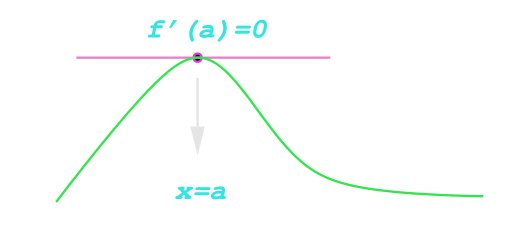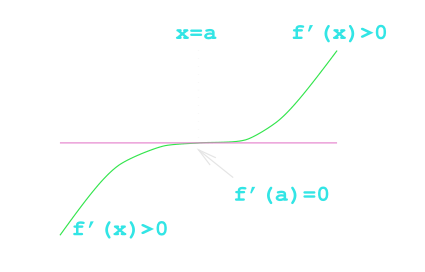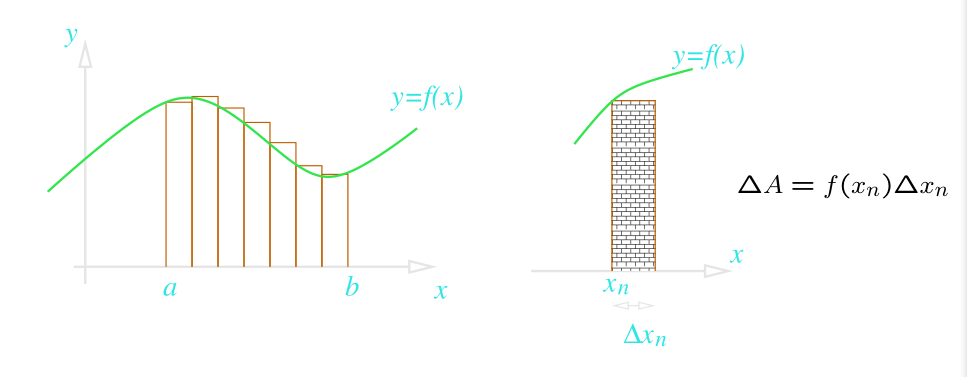16 KiB
Executable File
author, date, title, tags, uuid
| author | date | title | tags | uuid | |||||||
|---|---|---|---|---|---|---|---|---|---|---|---|
| Alvie Rahman | \today | MMME1026 // Calculus |
|
126b21f8-e188-48f6-9151-5407f2b2b644 |
Calculus of One Variable Functions
Key Terms
Function
A function is a rule that assigns a unique value f(x) to each value x in a given domain.
f(x) to each value x in a given domain.The set of value taken by f(x) when x takes all possible value in the domain is the range of
f(x).
Rational Functions
A function of the type
\frac{f(x)}{g(x)}
where f and g are polynomials, is called a rational function.
Its range has to exclude all those values of x where g(x) = 0.
Inverse Functions
Consider the function f(x) = y.
If f is such that for each y in the range there is exactly one x in the domain,
we can define the inverse f^{-1} as:
f^{-1}(y) = f^{-1}(f(x)) = x
f(x) = y.
If f is such that for each y in the range there is exactly one x in the domain,
we can define the inverse f^{-1} as:
Limits
Consider the following:
f(x) = \frac{\sin x}{x}
The value of the function can be easily calculated when x \neq 0, but when x=0, we get the
expression \frac{\sin 0 }{0}.
However, when we evaluate f(x) for values that approach 0, those values of f(x) approach 1.
This suggests defining the limit of a function
\lim_{x \rightarrow a} f(x)
to be the limiting value, if it exists, of f(x) as x gets approaches a.
x \neq 0, but when x=0, we get the
expression \frac{\sin 0 }{0}.
However, when we evaluate f(x) for values that approach 0, those values of f(x) approach 1.f(x) as x gets approaches a.Limits from Above and Below
Sometimes approaching 0 with small positive values of x gives you a different limit from
approaching with small negative values of x.
The limit you get from approaching 0 with positive values is known as the limit from above:
\lim_{x \rightarrow a^+} f(x)
and with negative values is known as the limit from below:
\lim_{x \rightarrow a^-} f(x)
If the two limits are equal, we simply refer to the limit.
Important Functions
Exponential Functions
f(x) = e^x = \exp x
It can also be written as an infinite series:
\exp x = e^x = 1 + x + \frac{x^2}{2!} + \frac{x^3}{3!} + ...
The two important limits to know are:
- as
x \rightarrow + \infty,\exp x \rightarrow +\infty(e^x \rightarrow +\infty) - as
x \rightarrow -\infty,\exp x \rightarrow 0(e^x \rightarrow 0)
Note that e^x > 0 for all real values of x.
Hyperbolic Functions (sinh and cosh)
The hyperbolic sine (\sinh) and hyperbolic cosine function (\cosh) are defined by:
\sinh x = \frac 1 2 (e^x - e^{-x}) \text{ and } \cosh x = \frac 1 2 (e^x + e^{-x})
\tanh = \frac{\sinh x}{\cosh x}
\sinh) and hyperbolic cosine function (\cosh) are defined by:Some key facts about these functions:
\coshhas even symmetry and\sinhand\tanhhave odd symmetry- as
x \rightarrow + \infty,\cosh x \rightarrow +\inftyand\sinh x \rightarrow +\infty \cosh^2x - \sinh^2x = 1- $\tanh$'s limits are -1 and +1
- Derivatives:
\frac{\mathrm{d}}{\mathrm{d}x} \sinh x = \cosh x\frac{\mathrm{d}}{\mathrm{d}x} \cosh x = \sinh x\frac{\mathrm{d}}{\mathrm{d}x} \tanh x = \frac{1}{\cosh^2x}
Natural Logarithm
\ln{e^y} = \ln{\exp y} = y
Since the exponential of any real number is positive, the domain of \ln is x > 0.
Implicit Functions
An implicit function takes the form
f(x, y) = 0
To draw the curve of an implicit function you have to rewrite it in the form y = f(x).
There may be more than one y value for each x value.
Differentiation
The derivative of the function f(x) is denoted by:
f'(x) \text{ or } \frac{\mathrm{d}}{\mathrm dx} f(x)
Geometrically, the derivative is the gradient of the curve y = f(x).
It is a measure of the rate of change of f(x) as x varies.
For example, velocity, v, is the rate of change of displacement, s, with respect to time, t,
or:
v = \frac{\mathrm ds}{dt}
Formal Definition
As h\rightarrow 0, the clospe of the cord \rightarrow slope of the tangent, or:
f'(x_0) = \lim_{h\rightarrow0}\frac{f(x_0+h) - f(x_0)}{h}
whenever this limit exists.
Rules for Differentiation
Powers
\frac{\mathrm d}{\mathrm dx} x^n = nx^{-1}
Trigonometric Functions
\frac{\mathrm d}{\mathrm dx} \sin x = \cos x
\frac{\mathrm d}{\mathrm dx} \cos x = \sin x
Exponential Functions
\frac{\mathrm d}{\mathrm dx} e^{kx} = ke^{kx}
\frac{\mathrm d}{\mathrm dx} \ln kx^n = \frac n x
where n and k are constant.
Linearity
\frac{\mathrm d}{\mathrm dx} (f + g) = \frac{\mathrm d}{\mathrm dx} f + \frac{\mathrm d}{\mathrm dx} g
Product Rule
\frac{\mathrm d}{\mathrm dx} (fg) = \frac{\mathrm df}{\mathrm dx}g + \frac{\mathrm dg}{\mathrm dx}f
Quotient Rule
\frac{\mathrm d}{\mathrm dx} \frac f g = \frac 1 {g^2} \left( \frac{\mathrm df}{\mathrm dx} g - f \frac{\mathrm dg}{\mathrm dx} \right)
\left( \frac f g \right)' = \frac 1 {g^2} (gf' - fg')
Chain Rule
Let
f(x) = F(u(x))
\frac{\mathrm df}{\mathrm dx} = \frac{\mathrm{d}F}{\mathrm du} \frac{\mathrm du}{\mathrm dx}
Example 1
Differentiate f(x) = \cos{x^2}.
f(x) = \cos{x^2}.Let u(x) = x^2, F(u) = \cos u
\frac{\mathrm df}{\mathrm dx} = -\sin u \cdot 2x = 2x\sin{x^2}
L'Hôpital's Rule
l'Hôpital's rule provides a systematic way of dealing with limits of functions like
\frac{\sin x} x.
Suppose
\lim_{x\rightarrow{a}} f(x) = 0
and
\lim_{x\rightarrow{a}} g(x) = 0
and we want \lim_{x\rightarrow{a}} \frac{f(x)}{g(x)}.
If
\lim_{x\rightarrow{a}} \frac{f'(x)}{g'(x)} = L
where any L is any real number or \pm \infty, then
\lim_{x\rightarrow{a}} \frac{f(x)}{g(x)} = L
You can keep applying the rule until you get a sensible answer.
Graphs
Stationary Points
An important application of calculus is to find where a function is a maximum or minimum.
when these occur the gradient of the tangent to the curve, f'(x) = 0.
The condition f'(x) = 0 alone however does not guarantee a minimum or maximum.
It only means that point is a stationary point.
There are three main types of stationary points:
- maximum
- minimum
- point of inflection
Local Maximum
The point x = a is a local maximum if:
f'(a) = 0 \text{ and } f''(a) < 0
This is because f'(x) is a decreasing function of x near x=a.
Local Minimum
The point x = a is a local minimum if:
f'(a) = 0 \text{ and } f''(a) > 0
This is because f'(x) is a increasing function of x near x=a.
Point of Inflection
f'(a) = 0 \text{ and } f''(a) = 0 \text { and } f'''(a) \ne 0
f'''(a) > 0
f'''(a) < 0
Approximating with the Taylor series
The expansion
e^x = 1 + x + \frac{x^2}{2!} + \frac{x^3}{3!} + \cdots
is an example of a Taylor series. These enable us to approximate a given function f(x) using a series which is often easier to calculate. Among other uses, they help us:
- calculate complicated function using simple arithmetic operations
- find useful analytical approximations which work for
xnear a given value (e.g.e^x \approx 1 + xforxnear 0) - Understand the behaviour of a function near a stationary point
Strategy
Suppose we know information about f(x) only at the point x=0.
How can we find out about f for other values of x?
We could approximate the function by successive polynomials,
each time matching more derivatives at x=0.
\begin{align*} g(x) = a_0 &\text{ using } f(0) \ g(x) = a_0 + a_1x &\text{ using } f(0), f'(0) \ g(x) = a_0 + a_1x + a_2x^2 &\text{ using } f(0), f'(0), f''(0) \ &\text{and so on...} \end{align*}
Example 1
For x near 0, approximate f(x) = \cos x by a quadratic.
x near 0, approximate f(x) = \cos x by a quadratic.-
Set
f(0) = g(0:f(0) = 1 \rightarrow g(0) = a_0 = 1 -
Set
f'(0) = g'(0:f'(0) = -\sin0 = 0 \rightarrow g'(0) = a_1 = 0 -
Set
f''(0) = g''(0:f''(0) = -\cos = -1 \rightarrow g''(0) = 2a_2 = -1 \rightarrow a_2 = -0.5
So for x near 0,
\cos x \approx 1 - \frac 1 2 x^2
Check:
x |
\cos x |
1 - 0.5x^2 |
|---|---|---|
| 0.4 | 0.921061 | 0.920 |
| 0.2 | 0.960066 | 0.980 |
| 0.1 | 0.995004 | 0.995 |
General Case
Maclaurin Series
A Maclaurin series is a Taylor series expansion of a function about 0.
Any function f(x) can be written as an infinite Maclaurin Series
f(x) = a_0 + a_1x + a_2x^2 + a_3x^2 + \cdots
where
a_0 = f(0) \qquad a_n = \frac 1 {n!} \frac{\mathrm d^nf}{\mathrm dx^n} \bigg|_{x=0}
(|_{x=0} means evaluated at x=0)
Taylor Series
We may alternatively expand about any point x=a to give a Taylor series:
\begin{align*} f(x) = &f(a) + (x-a)f'(a) \ & + \frac 1 {2!}(x-a)^2f''(a) \ & + \frac 1 {3!}(x-a)^3f'''(a) \ & + \cdots + \frac 1 {n!}(x-a)^nf^{(n)}(a) \end{align*}
a generalisation of a Maclaurin series.
An alternative form of Taylor series is given by setting x = a+h where h is small:
f(a+h) = f(a) + hf'(a) + \cdots + \frac 1 {n!}h^nf^{(n)}(a) + \cdots
Taylor Series at a Stationary Point
If f(x) has a stationary point at x=a, then f'(a) = 0 and the Taylor series begins
f(x) = f(a) + \frac 1 2 f''(a)(x-a)^2 + \cdots
- If
f''(a) > 0then the quadratic part makes the function increase going away fromx=aand we have a minimum - If
f''(a) < 0then the quadratic part makes the function decrease going away fromx=aand we have a maximum - If
f''(a) = 0then we must include a higer order terms to determine what happens have a minimum
Integration
Integration is the reverse of differentiation.
Take velocity and displacement as an example:
\int\! v \mathrm dt = s + c
where c is the constant of integration, which is required for
indefinite integrals.A
Definite Integrals
The definite integral of a function f(x) in the range a \le x \le b is denoted be:
\int^b_a \! f(x) \,\mathrm dx
If f(x) = F'(x) (f(x) is the derivative of F(x)) then
\int^b_a \! f(x) \,\mathrm dx = \left[F(x)\right]^b_a = F(b) - F(a)
Area and Integration
Approximate the area under a smooth curve using a large number of narrow rectangles.
Area under curve \approx \sum_{n} f(x_n)\Delta x_n.
As the rectangles get more numerous and narrow, the approximation approaches the real area.
The limiting value is denoted
\approx \sum_{n} f(x_n)\Delta x_n \rightarrow \int^b_a\! f(x) \mathrm dx
This explains the notation used for integrals.
Example 1
Calculate the area between these two curves:
\begin{align*}
y &= f_1(x) = 2 - x^2 \
y &= f_2(x) = x
\end{align*}
-
Find the crossing points
PandQ\begin{align*} f_1(x) &= f_2(x) \ x &= 2-x^2 \ x &= 1 \ x &= -2 \end{align*}
-
Since
f_1(x) \ge f_2(x)betweenPandQ
\begin{align*} A &= \int^1_{-2}! (f_1(x) - f_2(x)) \mathrm dx \ &= \int^1_{-2}! (2 - x^2 - x) \mathrm dx \ &= \left[ 2x - \frac 13 x^3 - \frac 12 x^2 \right]^1_{-2} \ &= \left(2 - \frac 13 - \frac 12 \right) - \left( -4 + \frac 83 - \frac 42 \right) \ &= \frac 92 \end{align*}
Techniques for Integration
Integration requires multiple techniques and methods to do correctly because it is a PITA.
These are best explained by examples so try to follow those rather than expect and explanation.
Integration by Substitution
Integration but substitution lets us integrate functions of functions.
Example 1
Find
I = \int\!(5x - 1)^3 \mathrm dx
-
Let
w(x) = 5x - 1 -
\begin{align*} \frac{\mathrm d}{\mathrm dx} w &= 5 \ \frac 15 \mathrm dw &= \mathrm dx \end{align*}
-
The integral is then
\begin{align*} I &= \int! w^3 \frac 15 \mathrm dw \ &= \frac 15 \cdot \frac 14 \cdot w^4 + c \ &= \frac{1}{20}w^4 + c \end{align*}
-
Finally substitute
wout
I = \frac{(5x-1)^4}{20} + c
Example 2
Find
I = \int\! \cos x \sqrt{\sin x + 1} \mathrm dx
-
Let
w(x) = \sin x + 1 -
Then
\begin{align*} \frac{\mathrm d}{\mathrm dx} w = \cos x \ \mathrm dw = \cos x \mathrm dx \ \end{align*}
-
The integral is now
\begin{align*} I &= \int! \sqrt w ,\mathrm dw \ &= \int! w^{\frac12} ,\mathrm dw \ &= \frac23w^{\frac32} + c \end{align*}
-
Finally substitute
wout to get:I = \frac23 (\sin x + 1)^{\frac32} + c
Example 3
Find
I = \int^{\frac\pi2}_0\! \cos x \sqrt{\sin x + 1} \,\mathrm dx
-
Use the previous example to get to
I = \int^2_1\! \sqrt w \,\mathrm dw = \frac23w^{\frac32} + c -
Since
w(x) = \sin x + 1the limits are:\begin{align*} x = 0 &\rightarrow w = 1\ x = \frac\pi2 &\rightarrow w = 2 \end{align*}
-
This gives us
I = \left[ \frac23w^{\frac32} \right]^2_1 = \frac23 (2^{\frac23} = 1)
Example 4
Find
I = \int^1_0\! \sqrt{1 - x^2} \,\mathrm dx
- Try a trigonmetrical substitution:
\begin{align*} x &= \sin w \ \ \frac{\mathrm dx}{\mathrm dw} = \cos w \ \mathrm dx = \cos 2 ,\mathrm dw \ \end{align*}
\begin{align*} x=0 &\rightarrow w=0 \ x=1 &\rightarrow w=\frac\pi2 \end{align*}
-
Therefore
\begin{align*} I &= \int^{\frac\pi2}_0! \sqrt{1 - \sin^2 w} \cos w ,\mathrm dw \ &= \int^{\frac\pi2}_0! \cos^w w ,\mathrm dw \end{align*}
But
\cos(2w) = 2\cos^2w - 1so:\cos^2w = \frac12 \cos(2w) + \frac12Hence
\begin{align*} I &= \int^{\frac\pi2}_0! \frac12 \cos(2w) + \frac12 ,\mathrm dw \ &= \left[ \frac14 \sin(2w) + \frac w2 \right]^{\frac\pi2}_0 \ &= \left( \frac14 \sin\pi + \frac\pi4 \right) - 0 \ &= \frac\pi4 \end{align*}
Integration by Parts
uv = \int\! u\frac{\mathrm dv}{\mathrm dx} \,\mathrm dx + \int\! \frac{\mathrm du}{\mathrm dx}v \,\mathrm dx
or
\int\! u\frac{\mathrm dv}{\mathrm dx} \,\mathrm dx = uv - \int\! \frac{\mathrm du}{\mathrm dx}v \,\mathrm dx
This technique is derived from integrating the product rule.
Example 1
Find
I = \int\! \ln x \,\mathrm dx
-
Use
\int\! u\frac{\mathrm dv}{\mathrm dx} \,\mathrm dx = uv - \int\! \frac{\mathrm du}{\mathrm dx}v \,\mathrm dx -
Set
u = \ln x
andv' = 1. -
This means that
u' = \frac1xandv = x.
\begin{align*} I &= x\ln x - \int! x\cdot\frac1x ,\mathrm dx + c \ &= x\ln x - \int! ,\mathrm dx + c \ &= x\ln x - x + c \ \end{align*}
Application of Integration
Differential Equations
Consider the equation
\frac{\mathrm dy}{\mathrm dx} = y^2
To find y, is not a straightforward integration:
y = \int\!y^2 \,\mathrm dx
The equation above does not solve for y as we can't integrate the right until we know y...
which is what we're trying to find.
This is an example of a first order differential equation. The general form is:
\frac{\mathrm dy}{\mathrm dx} = F(x, y)
Separable Differential Equations
A first order diferential equation is called separable if it is of the form
\frac{\mathrm dy}{\mathrm dx} = f(x)g(y)
We can solve these by rearranging:
\frac1{g(y} \cdot \frac{\mathrm dy}{\mathrm dx} = f(x)
\int\! \frac1{g(y)} \,\mathrm dy = \int\! f(x) \,\mathrm dx + c
Example 1
Find y such that
\frac{\mathrm dy}{\mathrm dx} = ky
where k is a constant.
y such thatk is a constant.Rearrange to get
\begin{align*} \int! \frac1y ,\mathrm dy &= \int! k \mathrm dx + c \ \ln y &= kx + c \ y &= e^{kx + c} = e^ce^{kx} \ &= Ae^{kx} \end{align*}
where A = e^c is an arbitrary constant.






